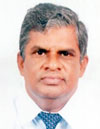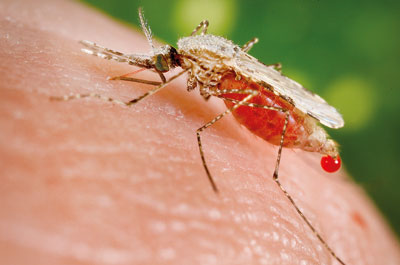Sunday Times 2
Urgent need to control spread of invader-malarial vector from South India
With no indigenous malaria cases being reported in the country since November 2012, our group of scientists have been sending out warnings about the potential invasion, particularly of the northern peninsula of Jaffna by the dangerous malaria vector in South India, Anopheles stephensi. While people were relieved over the malaria-free status declared by the World Health Organisation (WHO) in September 2016, thanks to the vigilance of the officers and other staff of the Anti-Malaria Campaign (AMC), the appearance of this invader-mosquito was first detected in the island of Mannar in December 2016.

Prof. Wimaladharma Abeyewickreme
Very small numbers of larvae of Anopheles stephensi were found in abandoned wells and wells in use in the Mannar Island. Since then, the AMC has been attempting to somehow restrict the spread of this “foreign mosquito” in the Mannar Island as well as preventing it from invading the mainland.
Although larval breeding has been observed, at the beginning it had been difficult to detect adult-mosquitoes of this species even in the Mannar Island, according to AMC entomologists. However, according to the latest reports, the mosquito has been observed breeding in other types of breeding places in the island and adults are now routinely found in entomological surveillance programmes.
It may be argued that because the indigenous malaria vectors such as An. culicifacies and An. subpictus are present in the Mannar Island, the addition of a new vector may not make much of a difference. But it does and it is important to understand that An. stephensi, which is a very efficient vector in India and some other countries compared to our local vectors, breeds in urban city environments including places such as water storage tanks.
Sri Lanka never had such an urban vector with the potential of giving rise to malaria outbreaks in urban cities. All our vectors have been found for hundreds of years in the Dry Zone and rural areas and nearly all indigenous cases in the past have originated from the Dry Zone. Therefore, it must be understood that along with the possible risk of the re-emergence of malaria through ‘imported’ cases of malaria coming in to the country from other countries where vectors are still present, there will now be a serious risk of malaria spreading even to the major cities if this new South Indian invader-vector spreads to the mainland from the Mannar Island.
 The AMC together with the Regional Malaria Officers who have much expertise and competence in vector control is mounting a massive effort against this mosquito in the Mannar Island. It has, however, been revealed during recent discussions that awareness among the people and the relevant authorities on this critical situation is poor. As a result, there have been some small-scale indirect protests against the AMC’s vector-control activities in the Mannar Island.
The AMC together with the Regional Malaria Officers who have much expertise and competence in vector control is mounting a massive effort against this mosquito in the Mannar Island. It has, however, been revealed during recent discussions that awareness among the people and the relevant authorities on this critical situation is poor. As a result, there have been some small-scale indirect protests against the AMC’s vector-control activities in the Mannar Island.
If these protests continue, it will hamper the control efforts which will provide an ample opportunity for the re-emergence of malaria through this new invader-vector. Its spread to cities may lead to a health disaster, with millions of malaria cases as in the past in Sri Lanka.
It is, therefore, the responsibility of all relevant authorities, professionals and politicians in the north to clearly understand this situation and actively take part in raising awareness among the public to facilitate the participation of the community in vector-control activities.
Then the AMC can eradicate this dangerous vector through integrated efforts before it is too late.
(The writer is attached to the Faculty of Medicine of the Kotelawala Defence University)

